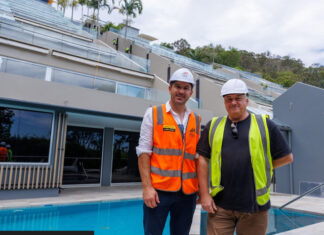The fact-filled 2021 Noosa Housing Needs Assessment Report supports what many residents already know: That the crisis of permanent housing supply and affordability has been driven in a large part by a surging demand for Noosa property and the conversion of homes into short-term accommodation businesses.
The well-researched trends are not new and, as the detailed 140-page report attests, an examination of unmet housing needs and their solutions is complex. Given this nationwide crisis also affects high-growth areas, the report ices down the idea that simply feeding more dwellings into a high-demand market will solve the problem.
“Affordable housing” in this context relates to specially-managed properties where rent is kept artificially lower than market rate and therefore “affordable”; proportionate to household income, usually not more than 30 percent of household income spent on rent.
Key workers unable to afford or find accommodation include police, teachers, emergency services workers, paramedics, medical professionals as well as trades providers and hospitality services staff.
An extra 6,400 dwellings can be accommodated by Noosa’s planning scheme, enabling population growth from 55,000 to over 64,000 by 2041, but will they be affordable? The report makes it plain that State and Commonwealth Governments have prime responsibility for driving affordable housing, but councils have a role to play.
Noosa Council can partner with State, Federal and non-government agencies to help them deliver rental housing stock at below market rates.
This is a focus of the Northern Sunshine Coast Social Services Network, the Sunshine Coast Housing and Homelessness Network and the Housing Action Group driven by Noosa MP Sandy Bolton.
Rezoning of council and state-owned land through planning scheme amendments and requiring new developments to dedicate a percentage of units to a Registered Community Housing Provider in return for a range of incentives, including up-zoning, are methods under consideration.
The Housing Needs Report will now inform a Housing Strategy which will also include analysis of many other options, such as secondary dwellings and dual occupancy.
While many South East Queensland councils are preparing wish lists for the 2032 Olympics of key road and heavy infrastructure, one of Noosa’s main challenges is accommodation for key workers to keep the shire running. There are many other unmet needs including housing for people with a disability, low-income households, single women over 50, first home buyers, the aged, the homeless and those fleeing domestic violence.
The Housing report’s release may have already had a significant impact. A majority of councillors this month supported staff recommendations to refuse new STA applications in medium/high density residential zones.
Data shows STA businesses were found to have spread widely, with almost 50 percent saturation in some residential neighbourhoods. Higher order planning scheme outcomes -requiring residential areas be kept for predominantly residential uses-were considered.
The Housing Needs report cites Noosa as having one of the highest STA penetration rates in the country and advises protecting permanent housing in residential zones when assessing future STA applications, as well as by amendments to the planning scheme. Of the 26,000 dwellings in Noosa, some 5,300 are visitor accommodation.
The related Local Law for STA accommodation that commences in February is intended to protect the amenity of residents and visitors from disturbances from some STA guest behaviour. The law was applauded at this year’s LGAQ conference by representatives of other Queensland communities, grappling with the same impacts. The LGAQ is providing the Local Law as a template to other councils.
Recent years have illustrated that nothing is as certain as constant disruptions and ever-accelerating change. The Housing Needs report is a snapshot of a dynamic reality which presents our community with a range of challenges.
Despite the challenges, future-focused urban planning that values the Noosa community’s health, amenity and natural assets remain key principles worth striving for at every stage of the shire’s constant evolution.
Cr Frank Wilkie is Noosa’s Deputy Mayor.







